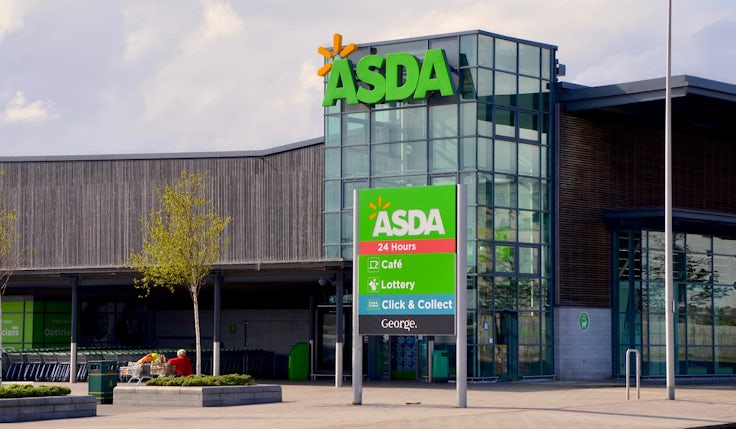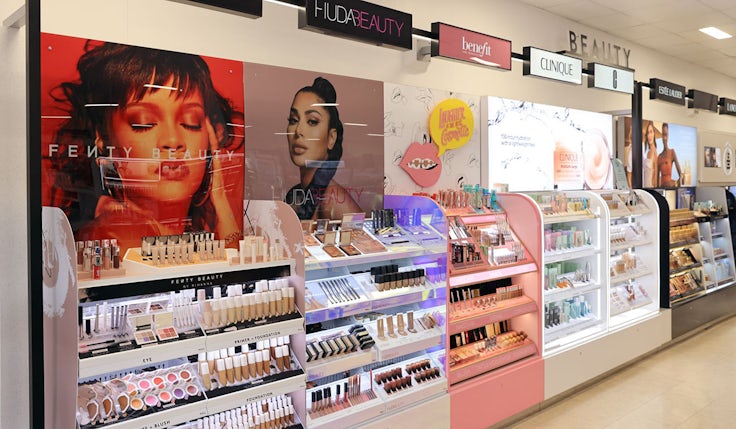Asda talks up ‘massive’ opportunity for retail media
As we head towards a cookie-less future and brands explore the open web, Asda’s Alex Crowe believes now is the time for retail media to shine.
 Amid a fragmented media landscape, first-party data challenges and a cookie-less world, could we be entering a new era for retail media?
Amid a fragmented media landscape, first-party data challenges and a cookie-less world, could we be entering a new era for retail media?
Asda head of media partnerships Alex Crowe believes it’s time the marketing industry embraced the opportunities retail media offers and stop seeing the channel as a poor relation in the wider media landscape.
“Generally retail media has always been the lesser cousin of the broad media and this is a really exciting time to be in this space,” said Crowe, speaking today (18 May) at Advertising Week Europe.
“It feels like there’s a massive will of everyone involved – advertisers, retailers, adtech agencies – to literally go and explore this opportunity. In my head it’s like saddle up and let’s go for it, I can’t wait.”
He appreciates work is needed on all sides to realise the opportunities on offer, not least for agencies to determine where retail media sits in the marketing mix and adtech companies to work out the role they play in a bricks-and-mortar environment. Crowe is clear retailers also have work to do.
“If I’m really honest about retailers and I look at the big four [supermarkets], the people who work across those businesses that I know, we have media that isn’t even called the same thing even though it is the same thing,” he noted.
“Our standards are different for what success looks like. We don’t have a single view of what success is. We all have our own ways we interpret and bring that data together.”
Generally retail media has always been the lesser cousin of the broad media and this is a really exciting time to be in this space.
Alex Crowe, Asda
Referring to recent research from adtech company Criteo, which found Amazon is still the most desirable retailer environment for advertisers, Crowe pointed out that while the ecommerce giant might have a first mover advantage, barriers are being broken down allowing other retailers to claim a slice of the action.
This includes Tesco, which wants to better monetise the first-party data gathered from its Clubcard members, which exceed 20 million UK households. The supermarket plans to share “enriched insight” with supplier brands in a bid to sell highly targeted digital ads across Tesco channels. The retailer will also allow brands to offer tailored ranges to specific customers based on its data.
Likewise, Boots is maximising the first-party data collected from its more than 17 million Advantage Card loyalty members with the creation of the Boots Media Group. Pitched as offering a “world class” media agency experience, Boots wants to help brands maximise the return on investment of their ad spend by combining creativity, data insights and robust measurement.
Within the context of first-party data, there is also the shift in consumer shopping habits to negotiate. At Asda, Crowe explained the relationship between ecommerce and physical retail has shifted since the onset of Covid. The supermarket has, for example, gone from 10% of total sales driven from online to 20%.
There is a cost to Asda in delivering the online shopping experience, from the investment in the platform to the staff picking the products and the delivery fleet. Ramping up retail media is helping to offset these increased costs.
“It’s a way of making the ecommerce business model more scalable. Let’s not forget, Covid has had a massive impact, but 80% of all of our sales come from the bricks-and-mortar. So omnichannel is still going to be where this is won and lost,” said Crowe.
“Being able to take the rich first-party data, connect it to in-store shoppers and then look at your technology and advertising in store to look at how you have different messages in different stores on different days of the week and different times of day, based on the weather.”
In this context Asda has a “massive opportunity” to go after, because Amazon doesn’t derive 80% of its sales from a bricks-and-mortar estate, he added.
Open web future
Fellow panellist Sophia Bates, strategy business director at Spark Foundry, pointed to a “huge” opportunity for retail media beyond Amazon, which currently generates two thirds of its ad funding from small businesses.
“There’s an opportunity for retailers who don’t have huge margins to take the additional revenue income stream and start reinvesting that to offset some of the cost increases in production during the time of the cost of living crisis and stay competitive,” she noted.
Claiming there has never been a better time to work in the sector, Bates described retail media as a “really strong contender” as brands continue to explore the opportunities of the open web.
While she does not believe the industry will reach the point where walled gardens like Facebook don’t have big place in the media ecosystem, she described greater emphasis on the open web is one possible future.
Within Asda a “massive transformation journey” is underway to move from Walmart’s custom, legacy tech to more ‘plug and play’ solutions, Crowe added. The shift in direction follows the completion of the supermarket’s £6.8bn sale to the Issa brothers and private equity firm TDR Capital in February.
Reflecting on this journey, Crowe highlighted the importance of having data in one place, a challenge for Asda which has close to 30 different websites. He noted that while everyone talks about data there is a need to interrogate the context, creative and media formats in greater detail.
“It’s about not going down the rabbit hole of metric after metric after metric, creating a really tiny audience and then forgetting all those other parts of the pie that makes the magic happen,” Crowe explained.
“It is bringing the media, plus the data and the targeting together, with the right creative message at the right time. It has to be all of it. It can’t just be ‘Let’s go nuts on data and put one creative on all our different segment types.’ It happens so much, more than you think.”







